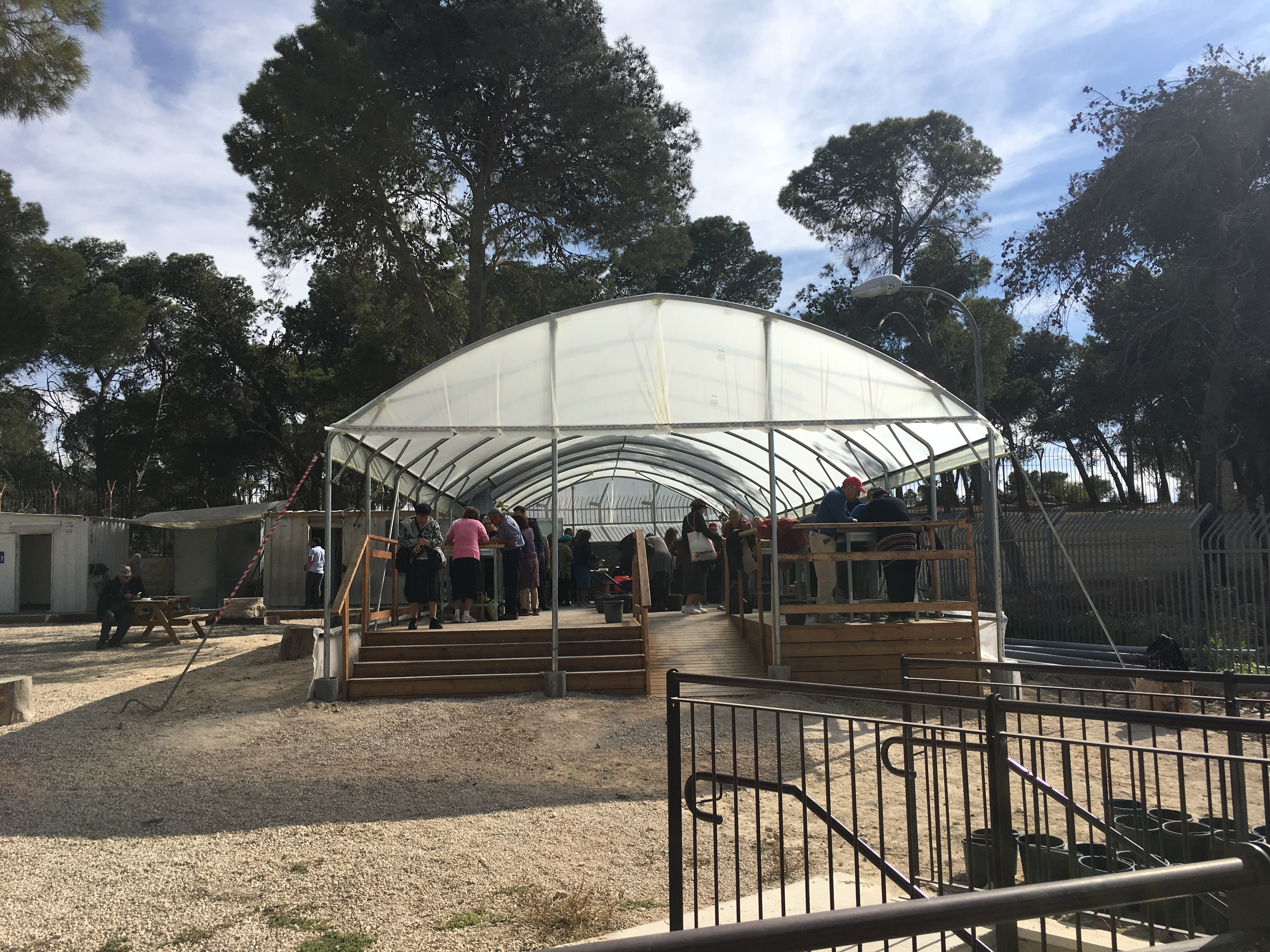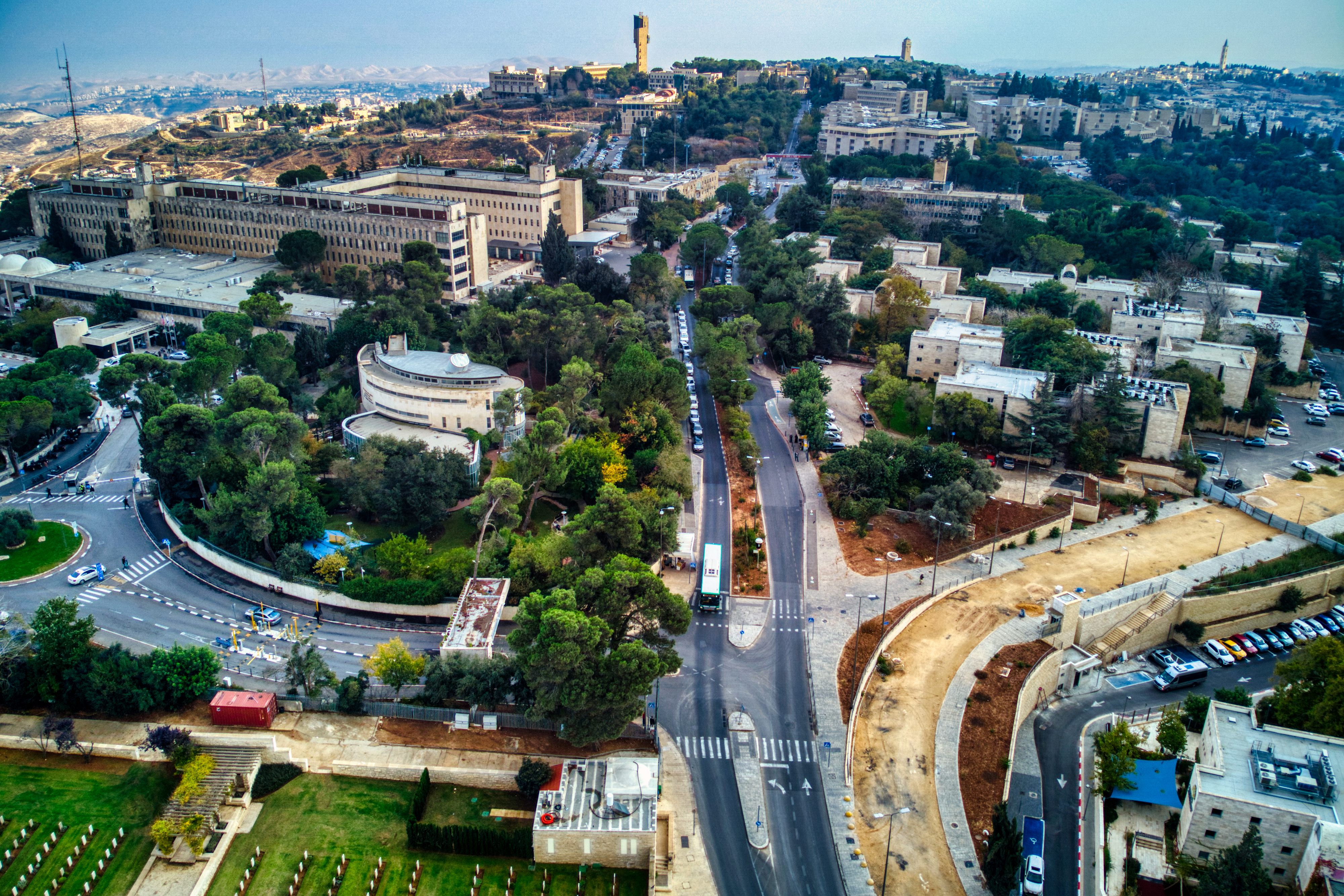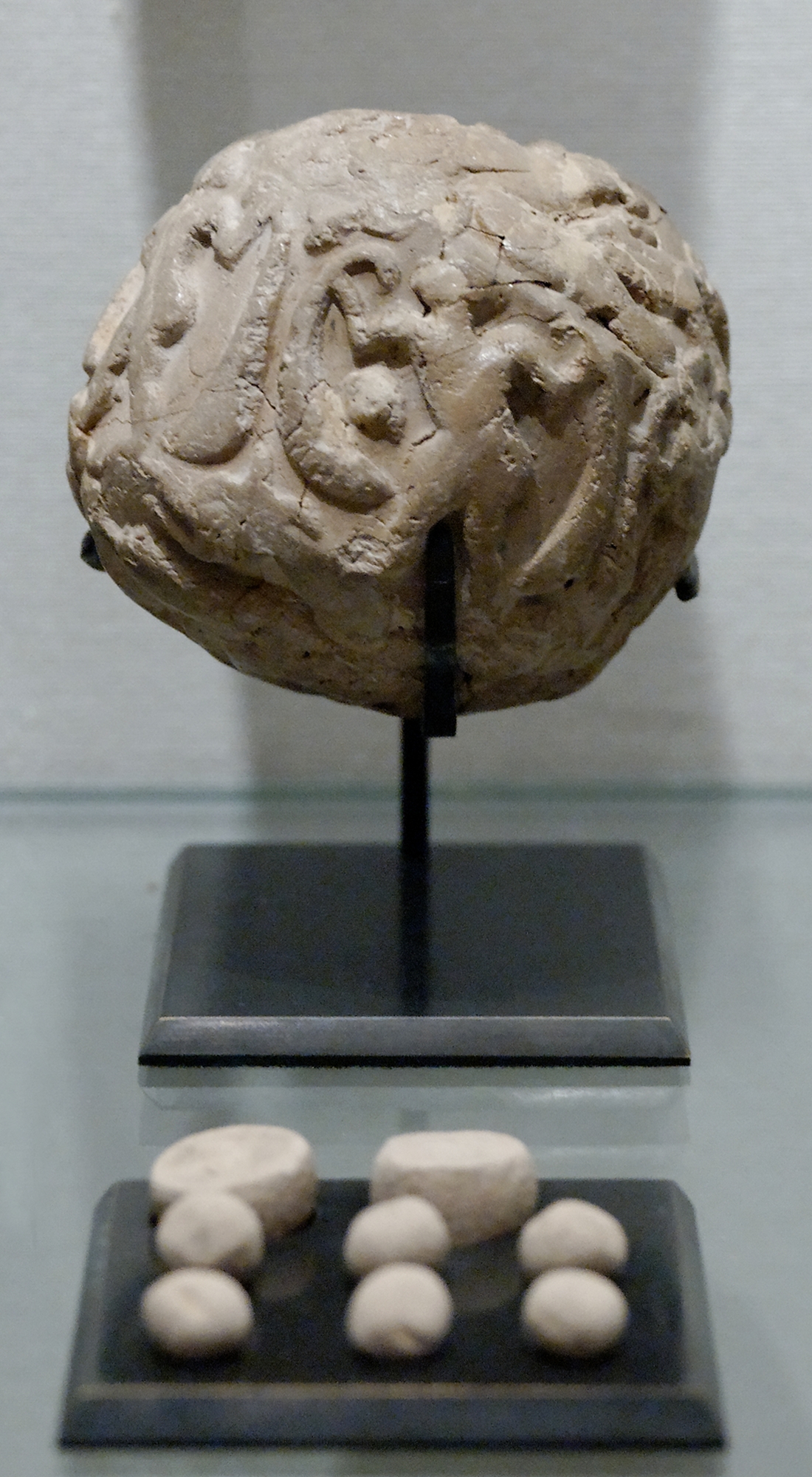|
Zachi Dvira
Zachi (Yitzhak) Dvira (Heb.:יצחק דבירה; formerly Zachi Zweig) is an Israeli archaeologist. He co-directs the Temple Mount Sifting Project and was the first person to recognize the archaeological importance of the debris removed from Temple Mount. He initiated a project for systematic sifting of it. Biography In 1999, Yitzhak (Zachi) Dvira was a student of archaeology at Bar-Ilan University. Together with fellow student Aran Yardeni, he and a group of friends began examining the construction rubble dumped by the Islamic Waqf during the Construction of el-Marwani Mosque (1996–1999). They were stopped by inspectors from the Israeli Antiquities Authority but managed to retrieve a few artifacts from the dump and displayed them at a conference about new studies on Jerusalem. Their report set off a storm in the conference hall. The Antiquities Authority claimed they were antiquities robbers, although the archaeologists in attendance supported them and protested against the ar ... [...More Info...] [...Related Items...] OR: [Wikipedia] [Google] [Baidu] |
Bar-Ilan University
Bar-Ilan University (BIU, he, אוניברסיטת בר-אילן, ''Universitat Bar-Ilan'') is a public research university in the Tel Aviv District city of Ramat Gan, Israel. Established in 1955, Bar Ilan is Israel's second-largest academic institution. It has about 20,000 students and 1,350 faculty members. Bar-Ilan's mission is to "blend Jewish tradition with modern technologies and scholarship and the university endeavors to ... teach the Jewish heritage to all its students while providing nacademic education." History Bar-Ilan University has Jewish-American roots: It was conceived in Atlanta in a meeting of the American Mizrahi organization in 1950, and was founded by Professor Pinkhos Churgin, an American Orthodox rabbi and educator, who was president from 1955 to 1957 where he was succeeded by Joseph H. Lookstein who was president from 1957 to 1967. When it was opened in 1955, it was described by ''The New York Times'' "as Cultural Link Between the sraeliRepublic ... [...More Info...] [...Related Items...] OR: [Wikipedia] [Google] [Baidu] |
Temple Mount Sifting Project
The Temple Mount Sifting Project (TMSP; formerly known as the Temple Mount Salvage Operation) is an archaeological project begun in 2004 whose aim is the recovery and study of archaeological artifacts contained within debris which were removed from the Temple Mount in Jerusalem without proper archaeological care. The project has made heavy use of crowd-sourcing, using many volunteers and tourists to help sift the debris, and is actually the most exposed to the public archaeological project in the world. The project sifting facility was located until 2017 in Emek Tzurim National Park. In June 2019 it moved to the Masu’ot Lookout at Mt. Scopus. History Despite its historical importance, no archaeologist has ever been able to carry out a systematic excavation on the Temple Mount. This was the state of affairs, when in November 1999 approximately 9,000 tons of archaeologically rich soil were removed from the Temple Mount by the ''Waqf'', using heavy earth moving equipment and ... [...More Info...] [...Related Items...] OR: [Wikipedia] [Google] [Baidu] |
Waqf
A waqf ( ar, وَقْف; ), also known as hubous () or '' mortmain'' property is an inalienable charitable endowment under Islamic law. It typically involves donating a building, plot of land or other assets for Muslim religious or charitable purposes with no intention of reclaiming the assets. A charitable trust may hold the donated assets. The person making such dedication is known as a ''waqif'' (a donor). In Ottoman Turkish law, and later under the British Mandate of Palestine, a ''waqf'' was defined as usufruct state land (or property) from which the state revenues are assured to pious foundations. Although the ''waqf'' system depended on several hadiths and presented elements similar to practices from pre-Islamic cultures, it seems that the specific full-fledged Islamic legal form of endowment called ''waqf'' dates from the 9th century AD (see below). Terminology In Sunni jurisprudence, ''waqf'', also spelled ''wakf'' ( ar, وَقْف; plural , ''awqāf''; tr, vak ... [...More Info...] [...Related Items...] OR: [Wikipedia] [Google] [Baidu] |
Excavations At The Temple Mount
A number of archaeological excavations at the Temple Mount—a celebrated and contentious religious site in the Old City of Jerusalem—have taken place over the last 150 years. Excavations in the area represent one of the more sensitive areas of all archaeological excavations in Jerusalem. The first were undertaken by the British Royal Engineers in the 1860s in the Ordnance Survey of Jerusalem and subsequently the PEF Survey of Palestine. Since Israel took control of the Old City in 1967, archaeological excavations in the vicinity of the Mount have been undertaken by Israel and the Jordanian/Palestinian-led Jerusalem Islamic Waqf. Both excavations have been controversial and criticized. Israeli and Jewish groups have criticized excavations conducted by the ''Waqf'', the Muslim authority in charge of the Al-Aqsa Mosque. In 2016, UNESCO criticized the Israeli excavations, under the pretext of the Israeli aggressions on Al-Aqsa Mosque, after Israel prevented UNESCO experts fro ... [...More Info...] [...Related Items...] OR: [Wikipedia] [Google] [Baidu] |
Gabriel Barkay
Gabriel Barkay (Hebrew: גבריאל ברקאי; sometimes transcribed from the Hebrew Gavriel Barkai) is an Israeli archaeologist. Early life and studies Born in 1944 in the Budapest Ghetto, Hungary, he immigrated to Israel in 1950. Barkay studied archaeology, comparative religion and geography at Tel Aviv University, graduated ''summa cum laude'', and received his PhD in Archaeology from the same university in 1985. His dissertation was about LMLK seal impressions on jar handles. He participated in the Lachish excavations with David Ussishkin. His academic areas of interest include the archaeology of Jerusalem, biblical archaeology, burials and burial customs, art, epigraphy, and glyptics in the Iron Age. Archaeological field work First Temple Period tombs In 1968-71, Barkay and David Ussishkin surveyed the Silwan necropolis from the time of the Judean Monarchy during the Iron Age, containing 50 rock-cut tombs of Judahite high government officials.Hershel Shanks, The Tombs ... [...More Info...] [...Related Items...] OR: [Wikipedia] [Google] [Baidu] |
Mount Scopus
Mount Scopus ( he, הַר הַצּוֹפִים ', "Mount of the Watchmen/ Sentinels"; ar, جبل المشارف ', lit. "Mount Lookout", or ' "Mount of the Scene/Burial Site", or ) is a mountain (elevation: above sea level) in northeast Jerusalem. Between the 1948 Arab–Israeli War and the Six-Day War in 1967, the peak of Mount Scopus with the Hebrew University campus and Hadassah Hospital was a UN-protected Israeli exclave within Jordanian-administered territory. Today, Mount Scopus lies within the municipal boundaries of the city of Jerusalem. Name and identification The ridge of mountains east of ancient as well as modern Jerusalem offers the best views of the city, which it dominates. Since the main part of the ridge bears the name Mount of Olives, the name "lookout" was reserved for this peak to the northeast of the ancient city. Its name in many languages (Hebrew, Arabic, Greek and Latin) means "lookout." Scopus is a Latinisation of the Greek word for "watcher", ''s ... [...More Info...] [...Related Items...] OR: [Wikipedia] [Google] [Baidu] |
First Jewish–Roman War
The First Jewish–Roman War (66–73 CE), sometimes called the Great Jewish Revolt ( he, המרד הגדול '), or The Jewish War, was the first of three major rebellions by the Jews against the Roman Empire, fought in Roman-controlled Judea, resulting in the destruction of Jewish towns, the displacement of its people and the appropriation of land for Roman military use, as well as the destruction of the Jewish Temple and polity. The Great Revolt began in the year 66 CE, during the twelfth year of the reign of Nero, originating in Roman and Jewish religious tensions. The crisis escalated due to anti-taxation protests and attacks upon Roman citizens by the Jews. The Roman governor, Gessius Florus, responded by plundering the Second Temple and arresting numerous senior Jewish figures. This prompted widespread rebellion in Jerusalem that culminated in the capture of the Roman military garrison by rebel forces as the pro-Roman king Herod Agrippa II and Roman officials fle ... [...More Info...] [...Related Items...] OR: [Wikipedia] [Google] [Baidu] |
First Jewish Revolt Coinage
First Jewish Revolt coinage was issued by the Jews after the Zealots captured Jerusalem and the Jewish Temple from the Romans in 66 CE at the beginning of the First Jewish Revolt. The Jewish leaders of the revolt minted their own coins to emphasize their newly obtained independence from Rome. History In the Revolt's first year (66–67 CE), the Jews minted only silver coins, which were struck from the Temple's store of silver. These coins replaced the Tyrian shekel, which had previously been used to pay the Temple tax. The newly minted silver coins included shekels, half-shekels, and quarter-shekels, each being labelled with the year of minting and their denomination. These are the first truly Jewish silver coins, and depict a chalice on the obverse with the year of the revolt above, surrounded by the ancient Hebrew inscription "Shekel of Israel". Three budding pomegranates are featured on the reverse, with the inscription "Jerusalem the Holy". During the second (67–6 ... [...More Info...] [...Related Items...] OR: [Wikipedia] [Google] [Baidu] |
Bulla (seal)
A bulla (Medieval Latin for "a round seal", from Classical Latin ''bulla'', "bubble, blob"; plural bullae) is an inscribed clay or soft metal (such as lead or tin) or bitumen or wax token used in commercial and legal documentation as a form of authentication and for tamper-proofing whatever is attached to it (or, in the historical form, contained in it). In their oldest attested form, as used in the ancient Near East and the Middle East of the 8th millennium BC onwards, bullae were hollow clay balls that contained other smaller tokens that identified the quantity and types of goods being recorded. In this form, bullae represent one of the earliest forms of specialization in the ancient world, and likely required skill to create. From about the 4th millennium BC onwards, as communications on papyrus and parchment became widespread, bullae evolved into simpler tokens that were attached to the documents with cord, and impressed with a unique sign (i.e., a seal) to provide the same kin ... [...More Info...] [...Related Items...] OR: [Wikipedia] [Google] [Baidu] |
Yuval Baruch
Yuval ( he, יוּבַל), also known as Kfar Yuval ( he, כְּפַר יוּבַל), is a moshav in northern Israel. Located in the Galilee Panhandle between Metula and Kiryat Shmona, it falls under the jurisdiction of Mevo'ot HaHermon Regional Council. In it had a population of . History The moshav was founded in 1953 by evacuees from the Old City of Jerusalem who originally arrived from Kurdistan on land that had belonged to the depopulated Palestinian village of Abil al-Qamh. It was named "Yuval" (creek) after the Jordan river's tributaries in the area and also referring to Jeremiah 17:8 ("sends out its roots by the creek"). In the early 1960s most of the founders abandoned the moshav, and it was repopulated by Indian Jewish immigrants from Kochi. The proximity of the moshav to the border of Israel with Lebanon has made it a target for terrorist attacks. In 1975 a group of terrorists infiltrated the moshav, took control of a residence, and killed three members of one fa ... [...More Info...] [...Related Items...] OR: [Wikipedia] [Google] [Baidu] |
Ronny Reich
Ronny Reich (born 1947) is an Israeli archaeologist, excavator and scholar of the ancient remains of Jerusalem. Education Reich studied archaeology and geography at the Hebrew University of Jerusalem. His MA thesis (supervised by Prof. Yigael Yadin) dealt with Assyrian architecture in Palestine (the Land of Israel), about which he later published several articles (concerning Ayelet HaShahar, Tel Hazor, the "Sealed Karum of Egypt", Beth-Zur, Tell Jemme, Ramat Rachel, Tel Megiddo and Buseira). His participation in excavations in the Jewish Quarter of the Old City of Jerusalem, carried out between 1969 and 1978 and directed by Nahman Avigad, caused a shift in his scientific interests, from the Iron Age to the Early Roman period. He completed his Ph.D. thesis, " Miqva'ot (Jewish Ritual Baths) in Eretz Israel in the Second Temple and the Mishnah and Talmud periods", in 1990 under the supervision of Profs. Nachman Avigad and Lee I. Levine. The thesis is based on discoveries made d ... [...More Info...] [...Related Items...] OR: [Wikipedia] [Google] [Baidu] |
Archaeology Of Israel
The archaeology of Israel is the study of the archaeology of the present-day Israel, stretching from prehistory through three millennia of documented history. The ancient Land of Israel was a geographical bridge between the political and cultural centers of Mesopotamia and Egypt. Despite the importance of the country to three major religions, serious archaeological research only began in the 15th century.''Encyclopedia of Zionism and Israel'', edited by Raphael Patai, Herzl Press and McGraw-Hill, New York, 1971, vol. I, pp. 66–71 Although he never travelled to the Levant, or even left the Netherlands, the first major work on the antiquities of Israel is considered to be Adriaan Reland's ''Antiquitates Sacrae veterum Hebraeorum,'' published in 1708. Edward Robinson, an American theologian who visited the country in 1838, published its first topographical studies. Lady Hester Stanhope performed the first modern excavation at Ashkelon in 1815. A Frenchman, Louis Felicien de Sau ... [...More Info...] [...Related Items...] OR: [Wikipedia] [Google] [Baidu] |
.jpg)








